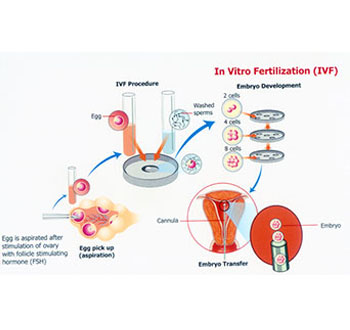In-vitro Fertilization (IVF) or Test Tube Baby
In vitro fertilization (IVF) is a complex series of procedures used to help with fertility and assist with the conception of a child.
During IVF, mature eggs are collected (retrieved) from ovaries and fertilized by sperm in a lab. Then the fertilized egg (embryo) or eggs (embryos) are transferred to a uterus.
IVF is the most effective form of assisted reproductive technology. The procedure can be done using the patient’s own eggs and partner’s sperm, or IVF may involve eggs, sperm, or embryos from a known or anonymous donor. In some cases, a gestational carrier — a woman who has an embryo implanted in her uterus — might be used.
A patient’s chances of having a healthy baby using IVF depend on many factors, such as age and the cause of infertility, embryo quality & lining of uterus.
If more than one embryo is transferred to the uterus, IVF can result in a pregnancy with more than one fetus (multiple pregnancies).


